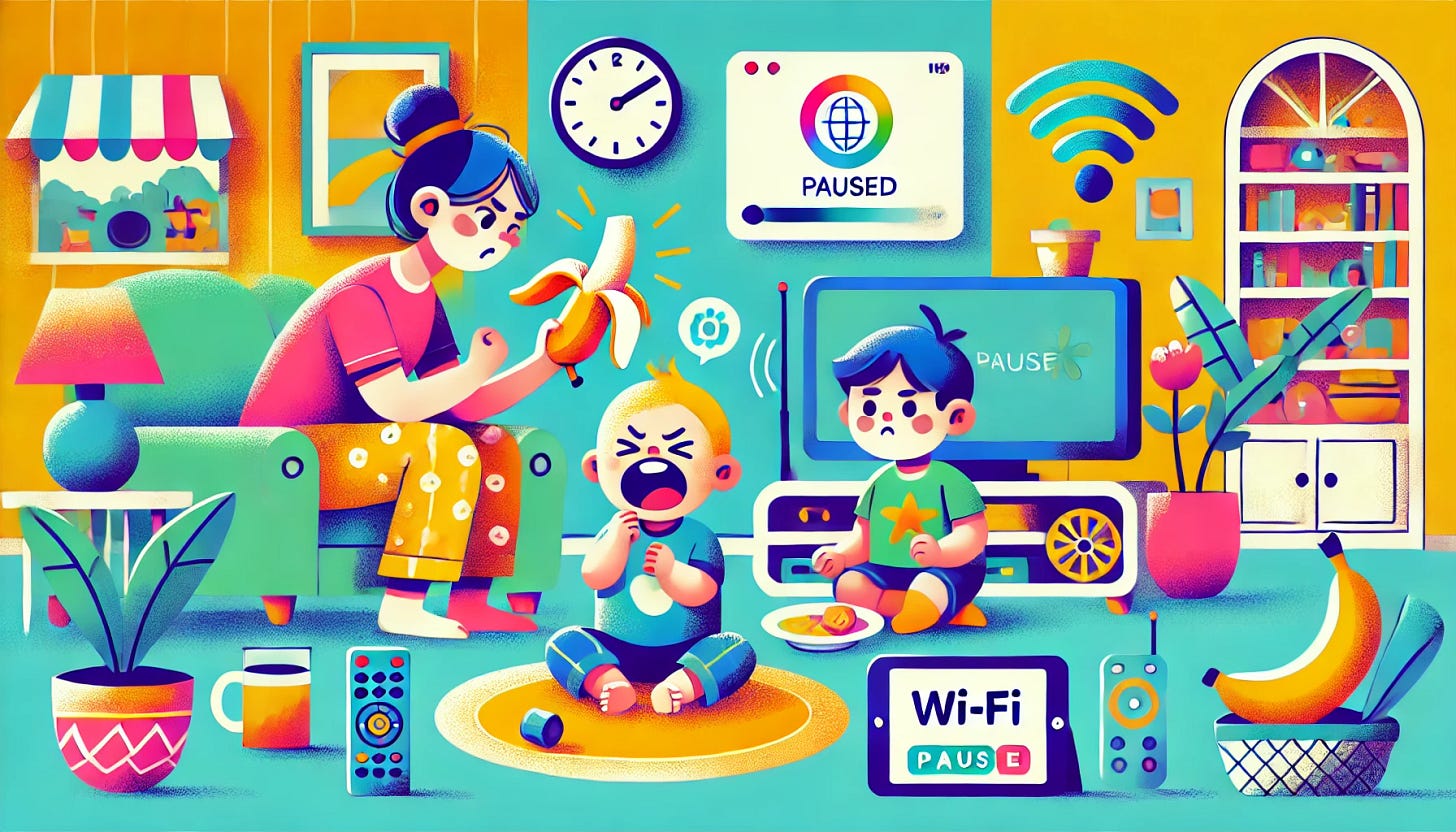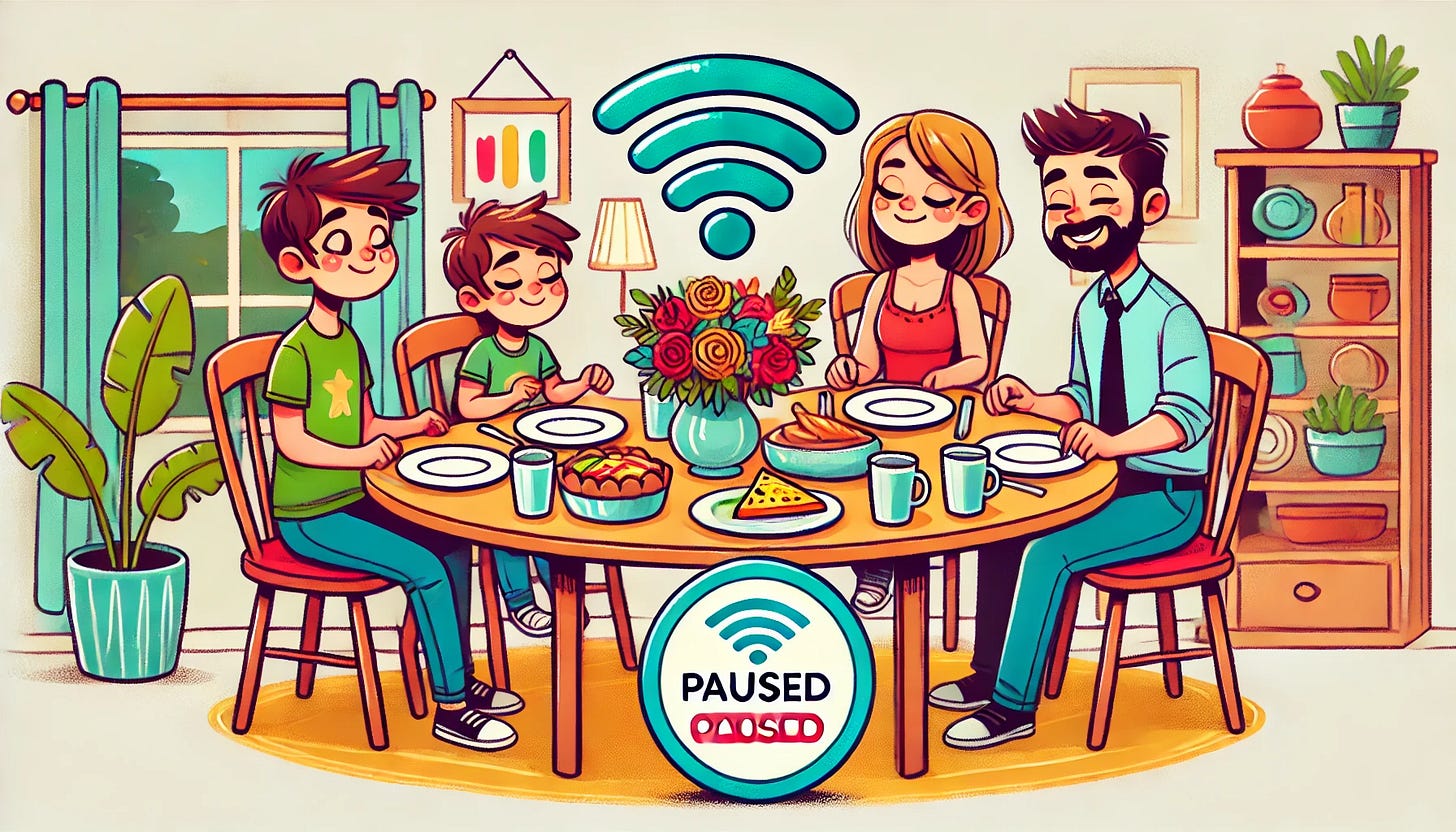Strategies for Managing Screen Time Without Conflict
Kids, particularly toddlers, melt down over the most surprising and insignificant things. A few days ago, my daughter asked for a banana. I grabbed one and handed it to her because she typically insists on opening them herself. This time, however, she wanted me to open it and handed it back to me.
This was obviously a trap, but I’m a sucker, so I accepted it and began to peel. The peeling went okay, but as I started, the top third of the banana broke off, and the screaming began. Two bananas later, she was eating and happy. Her brother and I ate the “spoiled” ones.
What This Post Is and What It Is Not
Today I’m discussing the tools I use to limit screen time as smoothly as possible. These are mostly software tools I use to limit (not eliminate) meltdowns, but they will not determine how much screen time is right for your child or help you if a meltdown begins.
On the question of how much screen time, I recommend reading this post from Jacqueline Nesi’s Techno Sapiens.
For general meltdown guidance, I recommend the very detailed and helpful "Winning the Toddler Stage" course from BigLittleFeelings
Tips for Managing Screen Time Without Conflict
The main idea of these tactics is that the devices should appear to lock themselves. You should communicate limits to your kids before handing them a device, but once they have it, it’s better for everyone if you don’t have to rip it out of their hands when time’s up.
App Time Limits
While Apple’s Screen Time and Android’s Digital Well-Being systems were originally built to help phone-addicted adults (hi!) avoid screen addiction, they can also be used as parental controls.
My general rule is that my son’s iPad locks after 30 minutes of any and all activities. The general lock is separate from streaming apps (Disney Plus, Paramount Plus, etc.), which are completely off-limits unless my wife or I unlock them.
The iPad locks the specified apps when the time is up, and they can only be unlocked by entering the screen time passcode, which is separate from the main iPad passcode.
Older kids can also request additional time from the screen, which will send an alert to your phone.
There were some ongoing bugs with Screen Time in iOS 16. I have not personally experienced any with my kids, but as with all technology, it can break, so be vigilant.
iOS Screen Time Setup Instructions
Android Parental Controls Walkthrough
Pause the Internet
This is my favorite. Most modern wifi routers give you the ability to not only pause the internet for the whole house but pause individual devices at specified times. This can be used for everything from creating internet-free family time during dinner or blocking a particular website (*cough* YouTube) your child is addicted to.
In our house, the primary use of the internet pause is to disable streaming on the TVs. It makes enforcing a “One episode of Paw Patrol before you have to go upstairs and get ready for school” policy much easier.
“I don’t know why the TV’s not working. It must think you’ve watched enough, buddy!”
“Break” all the Screens in Your House
For a less high-tech toddler-focused strategy, consider telling your kids all the TVs in the house broke at the same time. I have to credit my wife with this one. I frankly wasn’t sure it was going to work, but they bought it.
For bonus points, you can remove the wall plates for the coax cables behind your TV (assuming you’re not using it). Then you’ll have something to point to when your 4-year-old decides he doesn’t need to wait for a repairman and can fix it himself.
Stay Away from YouTube
I know there’s a kids version. I know there’s educational content, and I know it’s where Miss Rachel lives. But while I’m somewhat loose with screen time, my kids have not and will not discover YouTube until they are much older.
Google is very good at what they do, and YouTube’s recommendation engine is a technological marvel on par with sending a man to the moon. That said, don’t let your kids near it.
Anecdotally, when I talk to parents who have the most frustration around iPad usage it’s almost always that their kid is hooked on YouTube. One of the most common themes is watching other people play video games. Stop it! Don’t let them watch other people play video games! They would be much better off playing them by themselves and even better playing them with YOU! (Yoshi’s Crafted World is a great place to start. More on this in a later post.)
Today’s deals and news
Products & Deals
Snoo, the smart bassinet company, has started charging for a “premium” subscription of $20/month that covers features that were free when I used it with my kids (level lock and motion limiter, in particular). It’s a great product. I personally used it with both of my kids and gained dozens of hours of sleep, but it’s pretty crummy to start charging for software features that were built before the device was purchased.
News
Not much news and I’m not going to waste your time with only slightly-relevant articles. You’re welcome.






